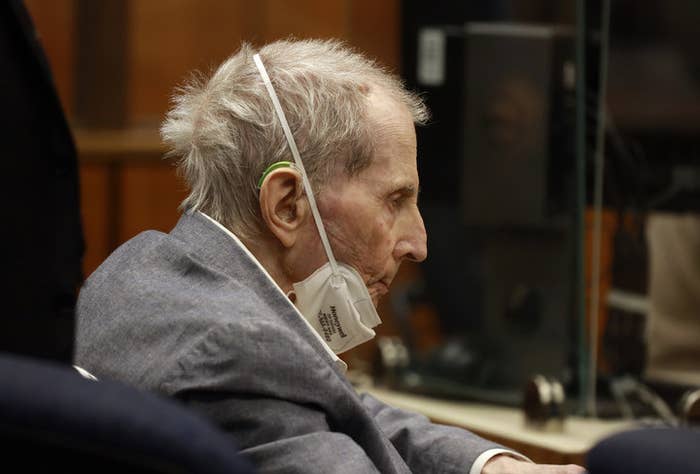
Robert Durst, the multimillionaire real estate heir who seemed to confess to three murders in the HBO documentary The Jinx, was found guilty in Los Angeles on Friday of killing his longtime friend Susan Berman in December 2000.
The jury found that Susan Berman was killed because she was a witness to a crime: providing an alibi for Durst in the disappearance of his wife Kathleen McCormack Durst. With this verdict, jurors signaled that they believed Durst, now 78, had also killed Kathie Durst in 1982, and murdered Berman because he believed she was about to implicate him in the earlier crime.
Durst was not in the courtroom when the verdict was read after being isolated due to potential COVID-19 exposure. Jurors deliberated for just over seven and a half hours before reaching a verdict. Judge Mark E. Windham thanked the jurors for their service, saying it had been the "most extraordinary trial" he had ever participated in or even seen.
Prosecutors effectively tried Durst for three murders: Berman, Kathie Durst, and his cantankerous 71-year-old Galveston neighbor, Morris Black, who died in September 2001.
Durst had admitted killing and dismembering Black, but he claimed the death was an accident, and the jury in that murder trial found him not guilty. Despite the gruesome nature of Black’s killing, the jury in Galveston, Texas, believed Durst’s testimony that he had shot Black accidentally during a struggle and, in a panic, cut up the body and disposed of the remains in Galveston Bay (Black's head was never recovered).
Prosecutors in Los Angeles argued that Black knew the true identity of Durst, who had absconded to Galveston and was living in a disguise (as a woman who couldn’t speak) to avoid then–district attorney Jeanine Pirro’s reinvestigation into his wife’s disappearance in New York.
Although the Galveston jury acquitted Durst and he couldn’t be prosecuted again for that crime, Los Angeles prosecutors were allowed to present evidence from that case to establish motive for Berman’s killing: Black, like Berman before him, could have implicated Durst in his wife’s disappearance nearly two decades earlier.
In a statement after the verdict was announced, Kathie Durst's family said that while they are pleased Durst was "rightly convicted" of killing Berman, they still want justice for Kathie Durst. They called on prosecutors in Westchester County, New York, to charge Durst in her death.
"It’s bizarre and unacceptable that Durst was tried for killing an accomplice before being held accountable for Kathie’s murder," the statement reads.
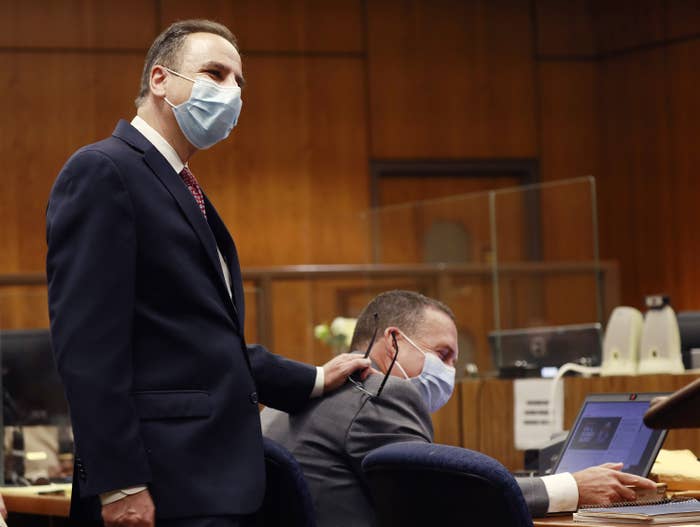
The People v. Robert Durst (2.0) was unprecedented in myriad ways. Most notably, it was the first high-profile criminal trial to go on hiatus because of the pandemic. The jury had heard only two days of testimony before the judge halted proceedings in March 2020. The trial was then rescheduled several times before finally resuming more than a year later on May 17.
In the marathon trial, jurors heard 54 days of testimony, which included video recordings of witnesses who were interviewed earlier — beginning in early 2017 — because they were at risk of dying before the trial. Windham also allowed prosecutors to include testimony from the Black trial, but because video was unavailable, “actors” — including the trial attorneys and law students — took the stand to read transcripts aloud to jurors in what resembled Hollywood auditions.
Durst’s health has been declining for years. Before the trial, he had esophageal cancer and underwent a number of unrelated surgeries, including a shunt to remove fluid from his brain. His head was shaved, revealing a prominent scar on his scalp, in his first LA court appearance. Visibly frail and in a wheelchair, he wears a hearing aid, has a raspy voice, and his urine is collected in an exposed catheter bag that Deputy District Attorney John Lewin once changed out during a lunch break.
In a March 2015 jailhouse interview with Lewin in New Orleans — the day the Jinx finale aired — Durst said his doctors told him he had five years to live. In LA, his defense team recently argued that he was not physically or mentally fit to testify and asked for a mistrial.
“He’s too sick to make the decision whether to testify,” said his lead attorney, Dick DeGuerin, who had successfully represented him in Galveston. “It’s cruel and unusual for Mr. Durst to be put through this in his condition. You should put a stop to this.”
Windham refused, noting that Durst had been “a quite active participant” throughout the trial. “He dresses for court, he listens, he writes notes, he talks to his lawyers, he waves to the friendly witnesses and acquaintances in the audience.”
In his nine days of testimony that followed, Durst remained sharp and engaged. Testifying on his own behalf had worked in his favor in Galveston, where jurors were swayed by his pantomime of a struggle over a gun that resulted in Black’s death.
In his closing arguments, prosecutor Lewin called Durst “lucky” to have lived so long despite his health issues. “His victims and their families don’t have that same peace of mind," he said.
When Durst was younger, witnesses testified, he was capable of incredible violence — including kicking his wife’s guest so hard in the face that he fractured a bone, yanking Kathie Durst out of a party by her hair, giving her a black eye and other visible injuries noted by her friends and colleagues, and, during another argument in their Manhattan penthouse, assaulting and threatening to kill her. She was so terrified that she crawled out of their 16th-floor apartment window wearing only pajamas, climbed around a parapet of their terrace, and begged their neighbors to let her in. And Durst’s fearful younger brother Thomas Durst, whose emotional shrieks on the stand shocked the courtroom into silence, recounted an incident in which his brother had shoved him in a revolving door so hard he fell down on the street.
But it seems his other brother, Douglas Durst, had the most to fear from Robert Durst. He had a restraining order against him, which Durst was arrested for violating in 2008 when he tried to sneak onto the brother’s property — wearing a ski mask. During another visit, he was carrying two guns. In a jailhouse call, he was recorded using code words interpreted to mean he was planning to kill Douglas Durst. When Durst was arrested for shoplifting a sandwich and jumping bail in 2001, police found a notebook containing this note: “What DD is doing to me, puts me in the same place as what Kathie did to me.” The notebook also contained four phone numbers for Douglas Durst. Police also found two .38-caliber revolvers and 86 rounds of ammunition.
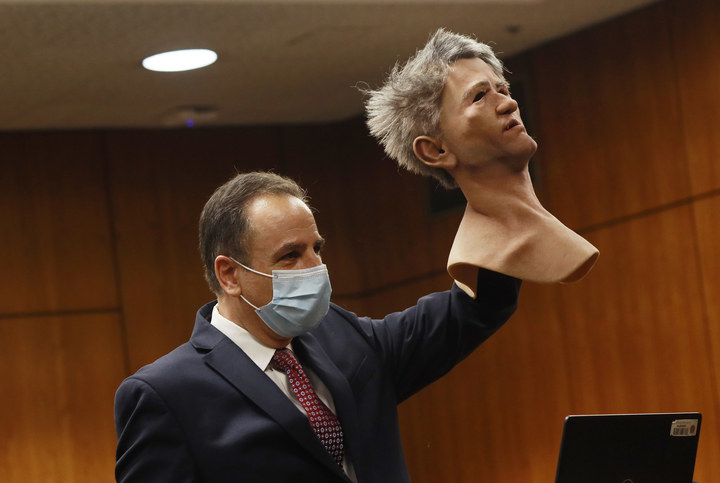
A .38-caliber revolver was among the items the FBI inventoried in Durst’s New Orleans hotel room after his 2015 arrest. They also found a chest-length "flesh-toned mask with salt and pepper hair" that prosecutor Habib Balian brandished before the jury in closing arguments. Instead of hiding out in Galveston, Durst might have set his sights on Cuba: Agents also found a map of the country — which doesn’t have an extradition treaty with the US — along with a fake ID, his passport and birth certificate, and $44,600 in $100 bills.
Though the case against Durst featured more than its share of drama, prosecutors were robbed of a “gotcha” moment when, shortly before the trial was set to begin, Durst admitted to writing the anonymous “cadaver note” that had alerted Beverly Hills police to a body at Berman’s address. It had been The Jinx’s climactic scene — before the finale’s hot mic bathroom “confession” — when filmmaker Andrew Jarecki confronted Durst with another envelope they’d found addressed to Berman on Durst’s office stationery, written in block-letter handwriting virtually identical to the “cadaver note.” Both envelopes misspelled “Beverly” as “Beverley.”
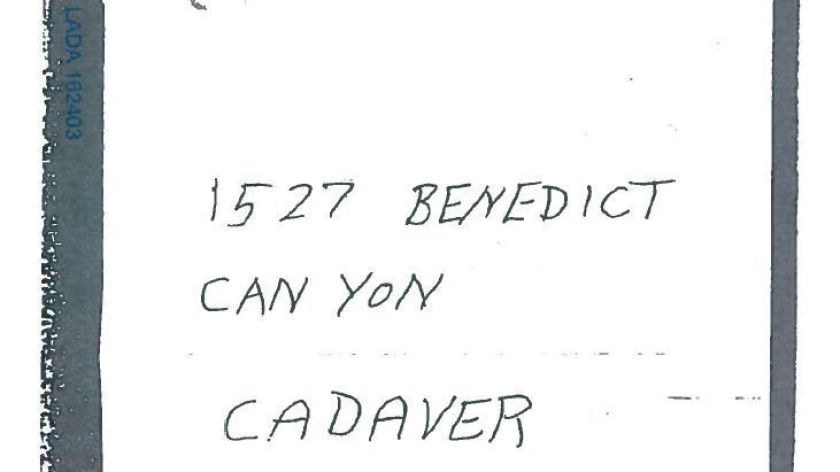
Though he’d denied he wrote the “cadaver note” for years, Durst and his defense team now were admitting he was at the scene of the killing, but saying Durst only discovered Berman’s body, then fled in a panic. Lewin, in return, made much of the fact that in their 2015 jailhouse interview — various clips of which were played throughout the trial — Durst had admitted that only the killer could have penned the note. Lewin also leaned into evidence that Durst had seemingly taken drastic measures in his travel routes and modes of transportation to ensure that no one knew he had visited LA at the time of Berman’s death.
The prosecution also zeroed in on the “BD Story,” a 33-page chronicle of 12 years of Durst’s life (“BD” refers to “Bob’s” initials), prepared in advance of the Black trial. Durst repeatedly denied writing it, and although the prosecution cited what they considered to be incriminating details, the defense argued that it was simply prepared by Durst’s lawyers for the trial.
Jurors were also shown a copy of the “dig” note, an apparent to-do list found by Kathie Durst’s sister in a wastebasket in the Dursts’ house a week after her disappearance. Durst admitted he wrote the note, but insisted that “dig” is short for “digital,” and his defense pronounced it as “dij.” Some of the scrawl is open to interpretation, but in essence it reads: “town dump, bridge, dig, boat, other, shovel or ?, check car-truck rentals.” Durst explained the last item as asking a local kid to rent a truck to lug his old sailboat to the dump.
Kathie Durst’s body has never been found and she was declared legally dead in 2017.
Despite all the hype about The Jinx — which provided enough convincing evidence for Durst to be arrested the day before its explosive premiere — filmmaker Jarecki did not testify. The prosecutors played plenty of damning footage from The Jinx and Durst’s audio commentary for the DVD of All Good Things, a movie loosely based on Durst’s life and alleged crimes. The defense, however, pointed out that the famous “What the hell did I do? Killed them all, of course” line had been manipulated by Jarecki: “Killed them all, of course” precedes “What the hell did I do?” with several muttered remarks between them.
Much of the defense strategy, however, involved victim-shaming. Kathie Durst was portrayed as an “unstable” social climber who had a drug addiction that was derailing her studies at Albert Einstein College of Medicine. Durst said the medical school had only accepted her into its program because of his family’s wealth and influence. Her colleagues, however, believed her grades slipped because she was being physically and mentally abused by her husband and was terrified he would kill her.
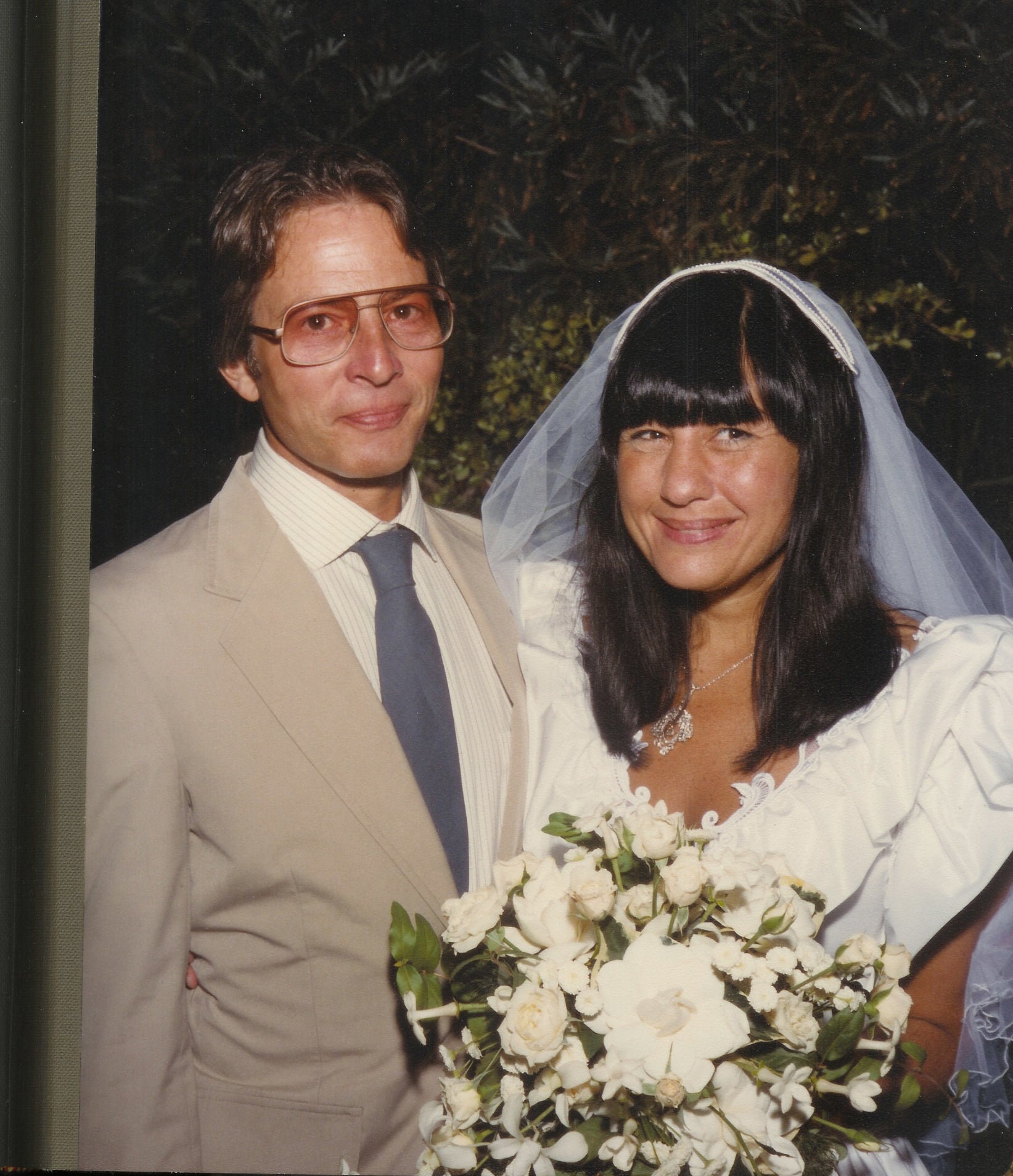
The defense described Susan Berman as a failed writer who lived essentially in squalor in a cheap apartment, where Durst had recently sent two checks of $25,000 because he was such a good friend. But prosecutors argued that she was blackmailing Durst, and the payments were to keep her from telling police that she had previously provided him an alibi by pretending she was Kathie and calling in sick to her medical school around the time Kathie went missing. Berman’s friend, Saturday Night Live alum Laraine Newman, said Berman confessed as much to her, although she later backpedaled.
Besides Durst’s apparent admission on The Jinx, the most damning confessions came secondhand from Nick Chavin, a mutual friend of Berman and Durst’s, whose testimony was replayed hours before the jury began its deliberations. He said Berman told him that “Bob killed Kathie,” and that Durst himself had confessed to her. However, Berman — the daughter of a Las Vegas mobster — insisted that they remain loyal to Durst.
Durst probably expected the same loyalty when he invited Chavin to dinner in 2014 to “talk about Susan.”
“I had to,” Chavin recounted Durst saying, which he interpreted as a confession to shooting their friend in the back of her head at her home.
His next nine words, prosecutor Balian said in his closing arguments, summed up the entire case:
“It was her or me. I had no choice.”
Correction: Durst testified for 15 days, nine of which were under cross-examination. An earlier version of this post misstated how long he was on the stand.
